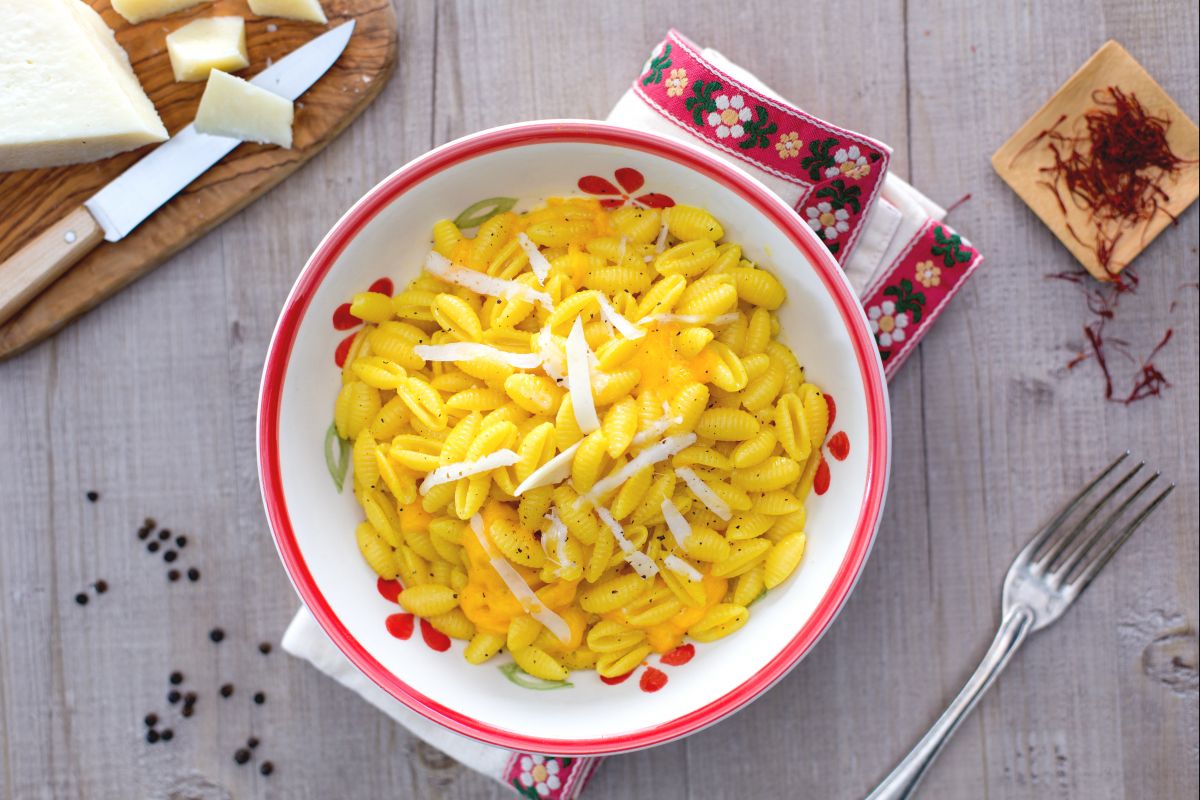Malloreddus with vegetables, sausage and saffron
- Easy
- 40 min

Soft ridges and shell-like shape set Malloreddus—famously known as Sardinian gnocchi or Gnocchetti Sardi—apart as one of those seriously nice pastas families love having around. Their unique ribbed look makes them pretty appealing on the plate, always catching eyes at family gatherings or weeknight dinners. The traditional story behind this homemade pasta from Sardinia brings a little Italian magic to the table (that regional Sardinian cuisine charm), especially when the pasta shows off that rich saffron color. Loaded with comforting pasta flavor and just the right feel, they’ve got a soft, almost pleasant texture—big bonus for sauce lovers, because every groove holds in all the good stuff. Sprinkle some Pecorino cheese over the top (so creamy and iconic in these dishes), and the taste is really something that can be described as DELICIOUS in every bite. People often say these dumplings fit right in at holidays or special events, but the truth is...everyone finds ways to sneak them into regular family meals since the look and taste always score major points.
Busy weeknights, relaxed Sundays, or big family celebrations all work perfectly with Homemade Malloreddus on the table, since everyone likes how well they soak up sauces and make the meal feel special. These little pasta shapes have a great ability to team up with sausage ragu—classic pairing around here—or bring out the best in mushroom sauces and arugula pesto. The combo of Pecorino cheese, robust sauce, and those ribbed edges means this dish never feels one-note, always moist and flavorful...kids, friends, and anyone who walks in the door want seconds. That’s what makes Sardinian gnocchi such a household favorite: home cooks can serve it up in a hundred different ways, plain with oil or full-on comfort with cheese, and it ALWAYS gets approval (especially on nights when you want something a little special but still easygoing). Finding a meal everyone likes can be tricky, but this pasta covers every base—looks good, tastes good, feels kind of festive, and really celebrates the best of traditional Italian recipes. Trust me, your family’s new favorite could be Malloreddus—pretty hard to stop at just one scoop.
You might also like:

To prepare malloreddus with Pecorino, start by cooking the pasta in boiling salted water according to the cooking times indicated on the package 1. Meanwhile, prepare the sauce by grating the fresh Sardinian pecorino cheese 2, then melt it in a double boiler, adding a bit of pasta cooking water to thin the cheese 3. Make sure the vessel containing the cheese does not touch the water in the pot below, otherwise, it will burn. Remember that a double boiler should always be used over low heat.

Mix with a whisk 4, this will result in a smooth, lump-free cream. Then, add the saffron powder 5 and mix well with a spatula, ensuring the powder blends well with the cheese 6.

Drain the pasta 8 and transfer it directly to the pan with the sauce, so as not to drain too much water 8. This will make the cheese softer. After mixing, add ground black pepper (or freshly ground, if you prefer) 9 and let it infuse for a few moments.

Once the gnocchetti are soaked in the sauce, plate them, and grate a bit more cheese for decoration. Serve the malloreddus with pecorino immediately while still hot!